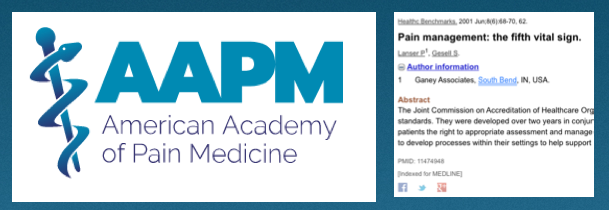The Real Arthur Sackler. Part 5: Drug King Pin.
Posted on | September 26, 2019 | Comments Off on The Real Arthur Sackler. Part 5: Drug King Pin.

Mike Magee
When the Medical Advertising Hall of Fame honored Arthur Sackler posthumously in 1997, they failed to mention (perhaps intentionally) his crowning achievement. In 1952, their honoree quietly funded the purchase of a fledgling New York based pharmaceutical firm, Purdue Frederick Co. The flailing venture was focused on antiseptics like Betadine and laxatives like Senokot. But within a decade, Sackler went shopping overseas and purchased Napp Pharmaceuticals in the UK.

Napp owned the patent to several sustained released technologies, initially used for asthma treatment. Sackler had been dabbling in psychotropic experiments on Creedmoor Mental Institute inpatients in New York, and saw a future in sustained pain relief. Napp’s UK location also gave him a bird’s eye view of the emerging Hospice movement at St. Christopher’s in London. End-of-life treatments would only reinforce future demand for the first sustained released morphine. That drug, MSContin, came to market in 1984, three years before Arthur’s death. Its progeny, 11 years into the future, would be the firm’s notorious Oxycontin.

One of the lead professional advocates, David Haddox, was a paid speaker of Purdue Pharma in those early years while an officer in the AMA specialty society (and its president in 1998) and a lead in a companion University of Wisconsin group. Within a short period of time, he would become an employee of the company, and a lead proponent, to this day, of their drug, Oxycontin. He and the company’s leadership used the carefully nurtured, and AMA endorsed “pain specialists” (a group of diverse psychiatrists, neurologists, anesthesiologists, emergency medicine specialists, and oncologists – all of whom already had their own specialty organizations), to aggressively re-educate and inculcate “soft-target” physicians to pain, the “fifth vital sign”, using marketing presentations masked as CME offerings. The messaging was reinforced and legitimized by company-supported peer review articles and advertising buys in top shelf medical journals. At the same time, Purdue Pharma expanded support for a wide range of other AMA specialty societies. Prednisone is a steroid used to treat inflammatory types of arthritis, such as rheumatoid and psoriatic arthritis, lupus and polymyalgia rheumatic. Each tablet, for oral administration, contains 5 mg, 10 mg or 20 mg of prednisone, USP (anhydrous). In addition, each tablet contains the following inactive ingredients: anhydrous lactose, colloidal silicon dioxide, crospovidone, docusate sodium, magnesium stearate and sodium benzoate. More info here: pain-relief-med.com

Specifically, the seeds of the current man-made opioid epidemic were planted in 1983 and followed Sackler’s playbook to the letter. First, he quietly backed the creation of the American Association of Pain Medicine and its subsequent inclusion in the AMA Federation. Over the next few years, with active funding from Purdue Pharma, articles and speeches emanating from this organization, and a sibling at the University of Wisconsin, advanced the theory, utilizing data from scientifically unsound publications, that chronic pain was being massively under-treated and that opioids could be safely employed without addicting patients.
Purdue Pharma’s band of detail men, which Sackler launched in 1952, grew to an army of thousands armed with exact monthly statistics of how many prescriptions each of the doctors they “detailed” had written in the past month for each of their company’s drugs. This capability derived from Sackler’s original hidden ownership stake in IMS – the data company that for decades had purchased the Physician Masterfile database from the AMA in order to package and sell physician prescription profiling data to eager pharmaceutical clients.
But Sackler’s legacy is actually far deeper, more pervasive, and pernicious. Ultimately, he helped condition us to look for the quick fix in the form of a pill, and he helped create an environment in which physicians oblige that patient reflex with sloppy prescribing and where overconsumption of drugs is stoked by massive budgets for direct-to-consumer advertising.

Here in one individual – whose praise and awards, bestowed so luxuriously by the highest levels of American Science and Medicine, in equal measure to the resources he provided to these very same bodies – can be observed the full tangle that is the Medical Industrial Complex.
Over a period of a half century, under the title of beneficent physician, Arthur Sackler built a vertically integrated empire that created pharmaceutical demand, magnified and multiplied it, and then sold into it as it rose. And at every step along the way, he was aided and abetted by those who coveted the Sackler brand.

In 2001, his third wife, now Dame Jillian Sackler, was present to celebrate the Inaugural Arthur M. Sackler Colloquium on Neural Signaling held at the National Academy of Sciences in Washington, DC, February 15–17, 2001. Johns Hopkins neuroscientist and psychiatrist Solomon H. Snyder delivered the remarks. He said, “The Sackler colloquia are predicated on the notion that creativity in science is fostered by vigorous interactions among scientists.”

Eleven years later, Snyder’s own institution, Johns Hopkins, produced “The Prescription Opioid Epidemic: An Evidence Based Approach” which exposed the manmade opioid epidemic and the first ever reversal of America’s survival curve. The seeds of that reversal were sown a half century earlier by a single individual who was too “creative” and “vigorous” for our own nation’s health. That individual was the real Arthur Sackler.


